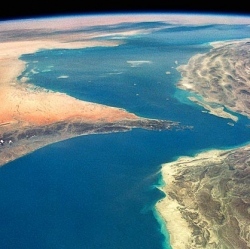
Among the cargo that’s set to go to the International Space Station, there will be five mice with a particular genetic mutation. The mice lack a gene that normal mice have, called Muscle Ring Finger 1, or MuRF-1. Scientists are hoping the missing gene will keep those mice healthier in space than their five ordinary compatriots.
These 10 mice, along with 10 others from another experiment, will live on the ISS for a month. They’ll be the first mammals, excluding humans, to spend so much time in space. (The typical length for a mouse’s stay on the ISS is more like two weeks.) This is just a hint of what’s to come: The Center for the Advancement of Science in Space, which manages U.S. research in the ISS, has been pushing for more mice and rats to live in the station, to help scientists learn more about the effects of microgravity in humans.
"By flying a mouse, whose typical lifespan is much shorter than humans’, you can follow the course of bone and muscle loss over a much greater percentage of the mouse lifespan than you can in humans," Michael Roberts, the Center for the Advancement of Science in Space’s senior research manager, tells Popular Science. That’s good for current astronauts, future astronauts who may spend longer stretches in space, and maybe even folks on Earth. Roberts’ center is hoping to sell university and pharmaceutical-company scientists on the idea that by sending mice and rats to space, they can learn more about Earthly disease symptoms whose effects on mammals are similar to microgravity’s.
